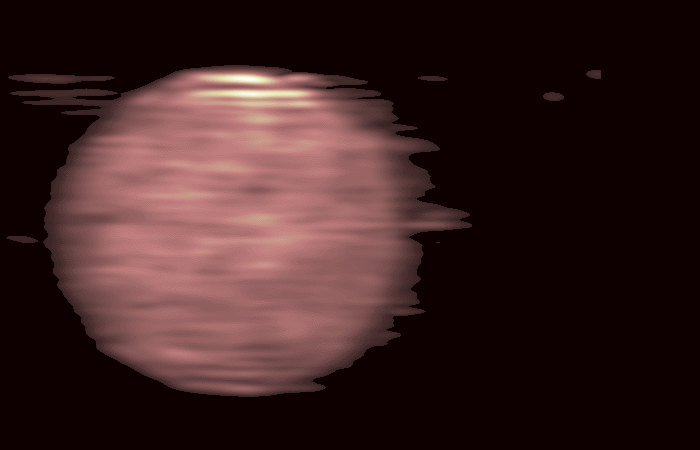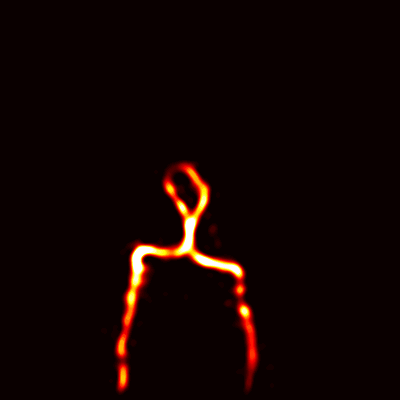The figure to the left shows the principle of FRAME; the ability to acquire several images in one single frame. The example below shows how this can be achieved. The technique is, in principle, based on structured illumination, but with a few modifications. By intensity modulating the illumination (i.e. structured illumination), the sample structures are shifted from the origin in the Fourier domain, into high frequency regions where the information lies isolated. By simultaneously illuminating a sample with several modulations, but with different frequencies/orientations, the image information from each illumination can be stored at different locations in the Fourier domain. Each individual frame is then extracted using a post-processing algorithm.
Since FRAME can acquire and store several images at the same time, it opens up for new, interesting imaging applications. For example, by recording several images at different times a single-frame video is created (see example to the right). Since there is no need to read out the individual frames, the temporal resolution of such a video would, in principle, have no limit.
An example of a FRAME video sequence. Two droplets of dye falling through water are illuminated at four different times. The camera observes all events.
After the data has been analyzed, the different times are extracted and we can clearly see how the droplet gradually fall downwards. Color-codes are used to differentiate the different times.


The world's fastest video: An example of a FRAME video sequence of a light pulse as it propagates through a Kerr medium. In the publication, we demonstrate how we can track the pulse at up to 5 THz frame rates (temporal resolution of 200 fs).
Since FRAME uses spatial codes to differentiate between different events, it can operate at any laser wavelength, which allow it to be used for spectroscopic investigations. The example shown here displays the formaldehyde distribution in a flame. The video was recorded using a planar (laser sheet) FRAME setup.
- A. Ehn, J. Bood, Z. Li, E. Berrocal, M. Aldén and E. Kristensson, FRAME: femtosecond videography for atomic and molecular dynamics, Light: Science & Applications, doi: 10.1038/lsa.2017.45, 2017.
- E. Kristensson, Z. Li, E. Berrocal, M. Richter and M. Aldén, Instantaneous 3D imaging of flame species using coded laser illumination, 36th International Symposium on Combustion, 2016.

